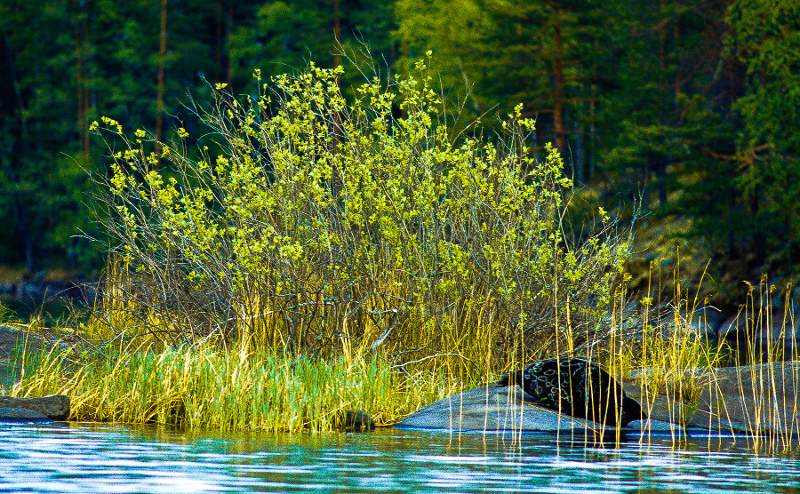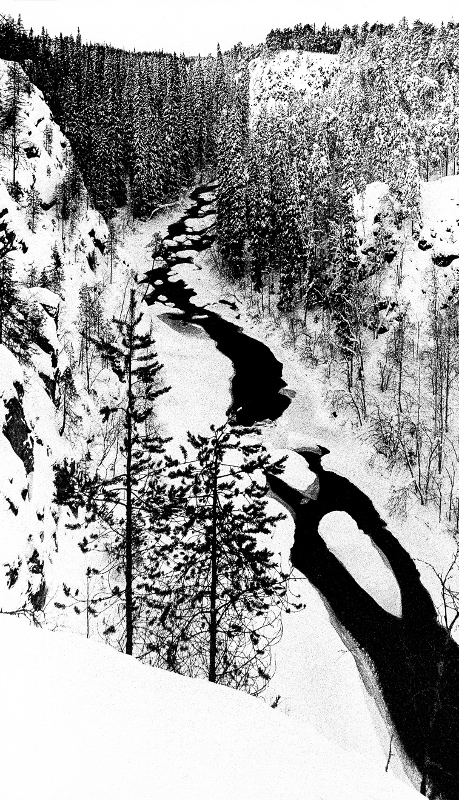

Risto Lounema has published seven photo books (www.worldcat.org, 6 titles) for example Wonders in The Finnish Nature 2001 as well as Holy Places in Finland 2003, which is his main work. He has made all the pictures - more than one thousand - and also written all texts except for the first one. The books have been printed 70 000 copies. All are sold out. Antiquarian bookshops sell them for a good price, for example Linnanmäki 1970 for more than 100 euros.

Lounema’s books can be found in almost every municipal and university library in Finland as www.helmet.fi in Helsinki (7 titles), and the National Library of Finland kansalliskirjasto.finna.fi (4 titles), www.finlit.finna.fi (3 titles); and further abroad as biblioteket.stockholm.se (2 titles) and www.ester.ee in Tallinn (6 titles).

Lounema’s works can also be found in several European university libraries, as in Helsinki www.helka.finna.fi (3 titles) and in Tallinn Estonian Academy of Arts Library (6 titles). Among old collections Lounema wants to mention the German Georg-August-University Göttingen Göttinger Universitätskatalog GUK (1 title), because it has specialized in Finno-Ugric literature.
"Charming details in the text are flashes referring to the past. Beautiful relevant landscapes add to the total effect. Pictures of the machines for their part give credit to the experts who have designed and use the equipment.
The most important thing in the book, however, may be the fact that this railway construction project has been recorded as a duly written book. So the public at large can also in the future get acquainted with living history in a compact package without being forced to plunge into the depths of archives. The credit of this cultural act goes to Risto Lounema, often known as a nature photographer, but originally graduated from Helsinki University as analytical chemist. The Center of Railway Administration can also accept thanks for ordering the book."
"Risto Lounema presents the Kerava-Lahti railroad shortcut with great pictures and words."
Professor Pekka Rytilä in book The Finnish Road Association 100 years, 2017.


"The inside idea in Lounema's fine book is that even modern Finnish people's relationships with nature have some relics of the holy experiences of the ancient times including both strangeness, mystery and dignity. This is continued in the literature by Lönnrot, Kivi, Leino, Hellaakoski and Rasa."
"It is just the text that gives depth and meaning to the pictures. The photos and the text support each other exceptionally harmoniously and effectively resulting from the fact that the same person has photographed and written the book. The written and pictorial stream of holiness lightly moves on as if freely associating, but in the end the reader understands how much knowledge and experience the author must possess. It is not possible to create this kind of book in a moment or by anybody.
It is good that the objects in Lapland are given a lot of space because they are perhaps the most exciting contribution to the book. Lounema has deeply orientated himself with history of the Lapps and the meaning of seita-stones. All in all the text shows Lounema's many-sided knowledge of history but also enlightened ecological point of view."
"Holy places in Finland is an exceptionally many-sided non-fiction book. It collects together in a unique way knowledge of Finnish nature, ancient mythology of the Finns and Lapps, Finnish general local history as well as Risto Lounema's, the writer's, feelings when wandering in places where the time seems to stand still.
The conventional history books do not inspire our imagination as much as reporter and photographer Risto Lounema's idea to approach the life of our ancestors through holy places. These places that can be recognized even today have been important geographical points in the development of our nation during the ten thousand years following the last ice age.
The illustration succeeds extremely well on feeding the reader's sensitive imagination brought about by the text. Taking the pictures has required a lot of travelling around. It has been necessary to seek single stones from far away fjelds. The pictures are of high level both as art photos and documents."
The literary critic, Licenciate in Philosophy, Pertti Koskimies enthusiastic about the book refers to earlier book treasures like by Knut Hamsun, Sakari Pälsi and Martti Haavio.

Pyhiä jysäyksiä pitkin maakuntaa –otsikolla arvio toimittaja Suonna Kononen pyhistään tunnetun Runo-Karjalan sanomalehti Karjalaisessa Risto Louneman kirjaa Suomen kansan pyhät paikat (2003).
Arvionsa alussa Kononen muistuttaa kirjaa mukaillen varhaisimmista pyhän pohtijoista ja määrittelijöistä. Pyhä ja pyhyys ovat ikivanha uskonnollinen käsite, mutta myös kansan syvästi tuntema asia, jota nimekkäät kirjailijamme ovat käsitelleet. Heitä ovat olleet muun muassa Kalevalaan nojautuva Eino Leino ja nobelisti Frans Emil Sillanpää. Pyhyyden tutkimisen aika osui yksiin kansallisen heräämisen kanssa. Sitä elettiin toista sataa vuotta sitten.


Kononen kirjoittaa: "Suomessa on ainakin yksi henkilö, jolle sana pyhä on muodostunut pakkomielteeksi. Hän on toimittaja-valokuvaaja Risto Lounema, joka on tehnyt kirjan Suomen kansan pyhistä paikoista."
Arvostelija toteaa hankkeen vaatineen pitkäkestoiset ponnistukset ja uhraukset laajasti eri maakunnissa, jotta Lounema on voinut onnistua pyrkimyksessään. Se on merkinnyt sileitä autonrenkaita ja risoja kumisaappaita. "Mutta onpahan vaivalla syntynyt hieno kirjakin."
"Nurmeksen Mujejärven Kalmoniemessä kirjailijan lopulta haltioittaa pyhyys, jota ihminen ei ole rakentanut."
"Olen nähnyt Suomessa kymmeniä järviharjuja, mutta Mujejärven Kalmoniemi on niistä kauneimpia ja lisäksi vielä pyhä", Lounema tunnustaa kirjassaan.
Klassikkokirjasto/Kansalliskirjasto/Kansalliseepokset/
Lönnrotin jäljillä/Lounema Risto/ET-lehti 1992

"Runsas ja loistokas kuvitus yhdessä asiapitoisen taustatekstin kanssa syventää epäilemättä vaativankin lukijan kotimaan luonnon tuntemusta", kirjoittaa Helsingin yliopiston maantieteen professori Matti Tikkanen Suomen luonnon ihmeitä kirjan arvostelun loppulauseessa, TERRA 113:4 2001.
Tikkanen toteaa, että yleensä luontokirjoissa pääpaino on elävässä luonnossa, mutta Lounema on koonnut kirjaansa mittavan määrän myös elotonta luontoa käsittelevää aineistoa. Sellaisesta hän mainitsee esimerkkinä Merenkurkussa ja Perämerellä ympäristöä muokkaavan maannousun – lähes metrin sadassa vuodessa. Se tuo jatkuvasti esiin veden alta laajat alueet ja kääntää lähivuosisatoina Pohjanmaan jokien virtaussuunnan.
"The abundant and magnificent illustration together with competent background text will no doubt deepen even a demanding reader’s knowledge of Finnish nature", writes professor Matti Tikkanen from Helsinki University in the end of his critique of the book Wonders in the Finnish Nature, TERRA 113:4 2001.
Professor Tikkanen states that usually the main stress in nature books lies on the living nature, but Risto Lounema has gathered in his book an outstanding amount of material covering also lifeless nature like the exceptional phenomenon, the rise of land in the Gulf of Bothnia.
"Maisemien jälkeen paneudutaan maankohoamisilmiöön, jota havainnollistetaan muun muassa merestä kohoavilla Björköbyn De Geer –moreeneilla ja Liminganlahden maannousun laajentamalla Temmesjokisuistolla. Maannousun todetaan olevan luontomme ihme ja erikoisuus koko maapallonkin mitassa", arvostelija kirjoittaa.
Hyväksi arvioimansa 239–sivuisen kirjan tekijästä Tikkanen sanoo: "Lounema tunnetaan arvostettuna ja palkittuna kuvajournalistina, joka on pitänyt luontokuvanäyttelyitä sekä Suomessa että ulkomailla."
"Risto Lounema has travelled around in the Finnish provinces in the course of years enviably much. He has recorded on the film famous disappearing folklore, landscapes that extremely please the viewer's eyes as well as amazing details in the Finnish nature.
The photos would remain mere pictures without capable explanations which Lounema drops all the way. As a matter of fact the book gives massive dose of information of the Finnish history, geology and biology so that sometimes the explanations are even too scientific."
"Risto Lounema has recorded the Finnish nature with his camera for several years and now compiled a splendid book of his material. Beautiful photos are complemented by a good text shortly clarifying the background of the wonders."



Google Search: Siirtolohkareet Lounema
Vapaat, nimekkäät kirjallisuuskriitikot ovat pääteostani Suomen kansan pyhät paikat arvioidessaan päätyneet toistuvasti mainitsemaan kirjailijoita, jotka ovat niin sanotusti kansakunnan kaapin päällä, ja ovat tässä yhteydessä tulleet heidän mieleensä.
Kiistattomista sanan mestareista on mainittu ainakin Haavio, Hansun (nobel / Norja), Hellaakoski, Kivi, Leino, Lönnrot, Pälsi ja Sillanpää (nobel). Ketään heistä en tunne henkilökohtaisesti, enkä ole pahemmin lukenut heidän teoksiaan.
Olen ajautunut ihmetyksen tilaan. Kysynkin Sinulta Lukijani, mikä mahtaa olla syynä ilmiöön; sillä eihän se tällä frekvensillä mikään sattuma voi olla.
Palkitsen mielestäni parhaan vastauksen kuvakirjallani Linnanmäki (1970), jonka varustan omistuskirjoituksella. Miksi nähdä vaivaa sen saadakseen? Pohjoismaiden suurimman valokuvauslehden, ruotsalaisen FOTOn päätoimittaja otsikoi siitä tekemänsä arvion: Så här skall en fotobok göras. Että tällä tavoin.
Tekstiä en kirjaan ehtinyt laatia, ideat ja kuvat kylläkin. Käännyin siksi runoilija Pentti Saarikosken puoleen. Hän lupautui tekemään kirjaani huvipuistoaiheiset runot. Niitä on pidetty onnistuneina ja taiteellisina. Jo yksistään niiden takia kannattaa yrittää.
Kirjastani on kommentteja näillä kotisivuilla. Vastaukset vappuun 2021 mennessä, kiitos.